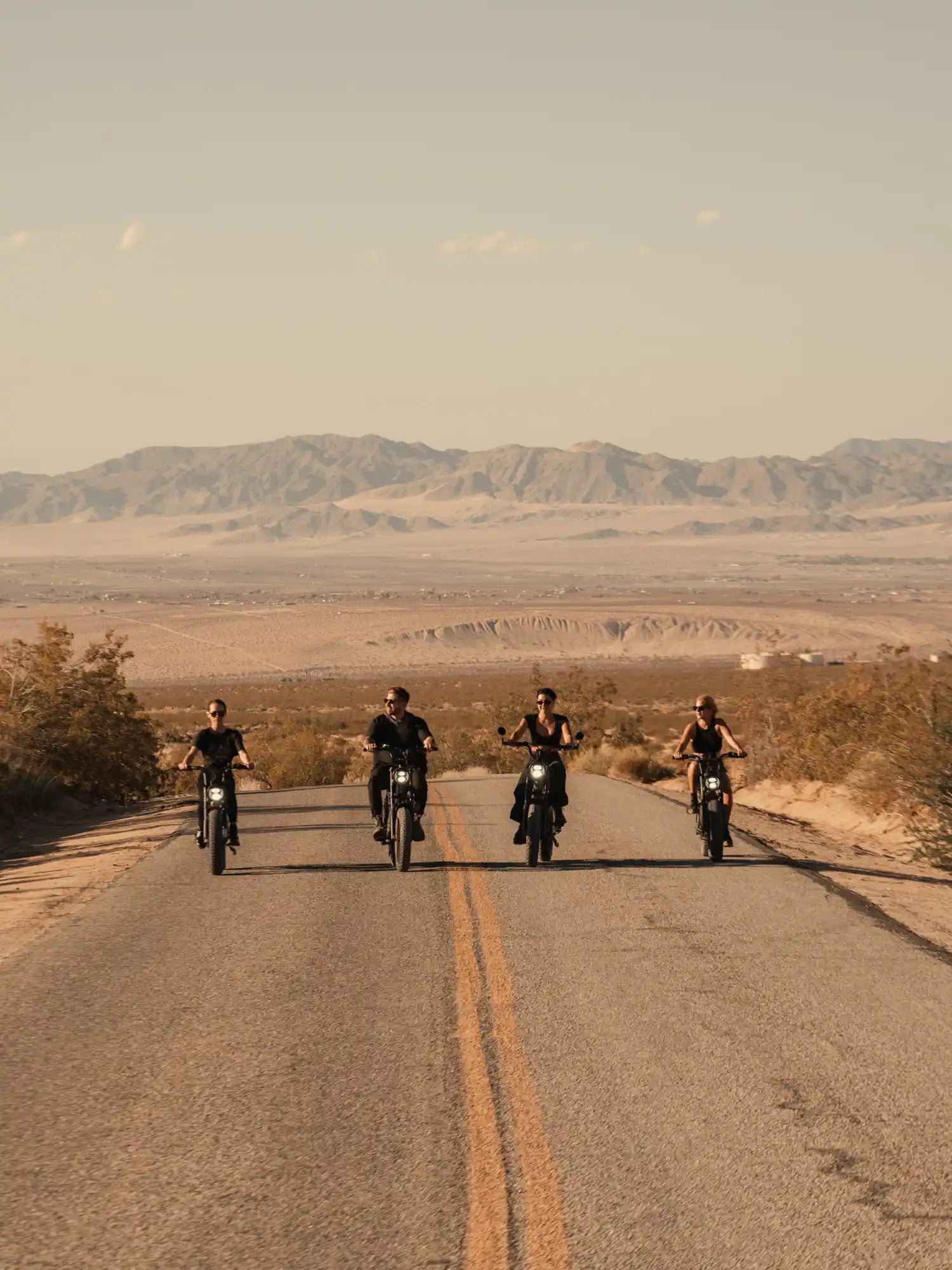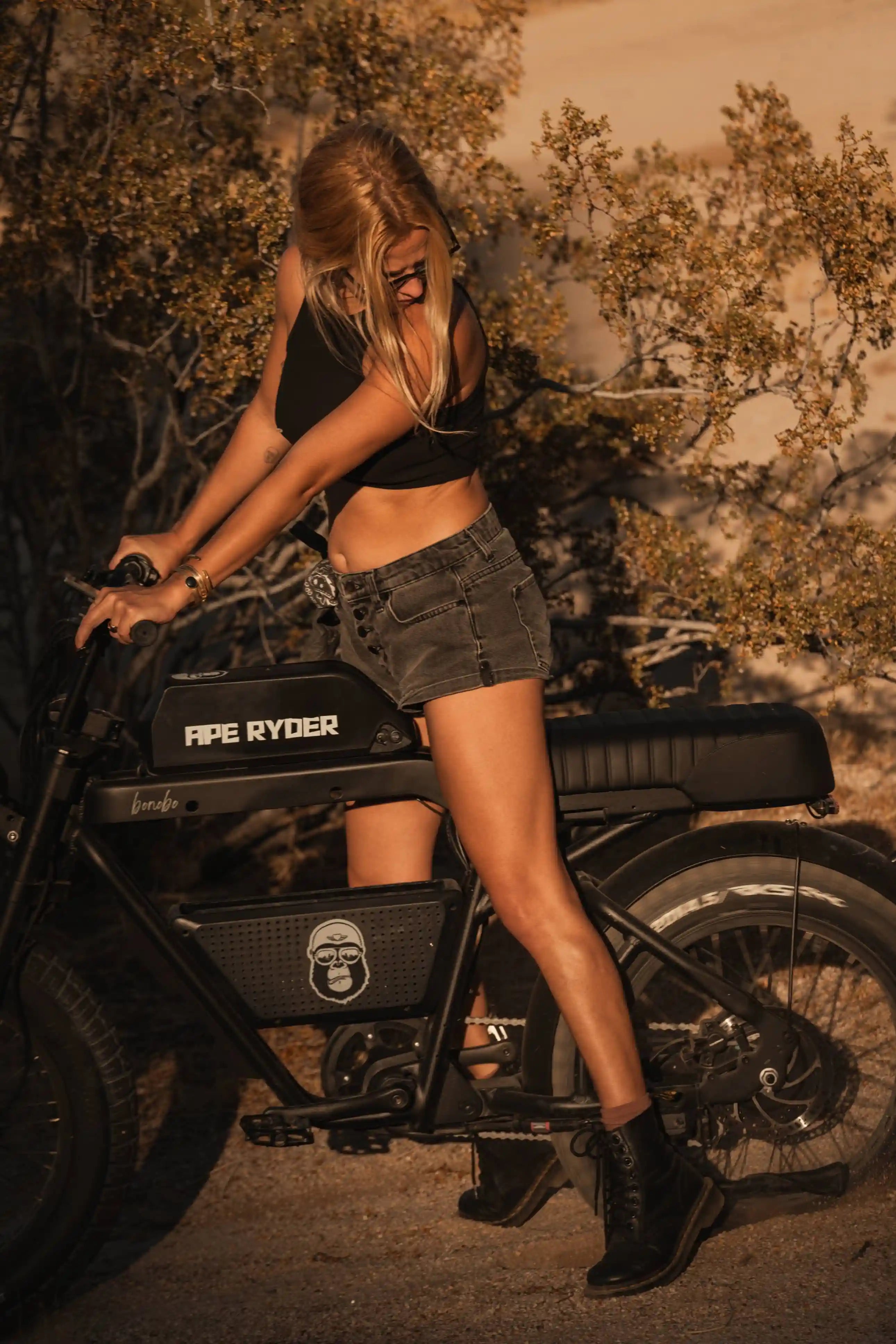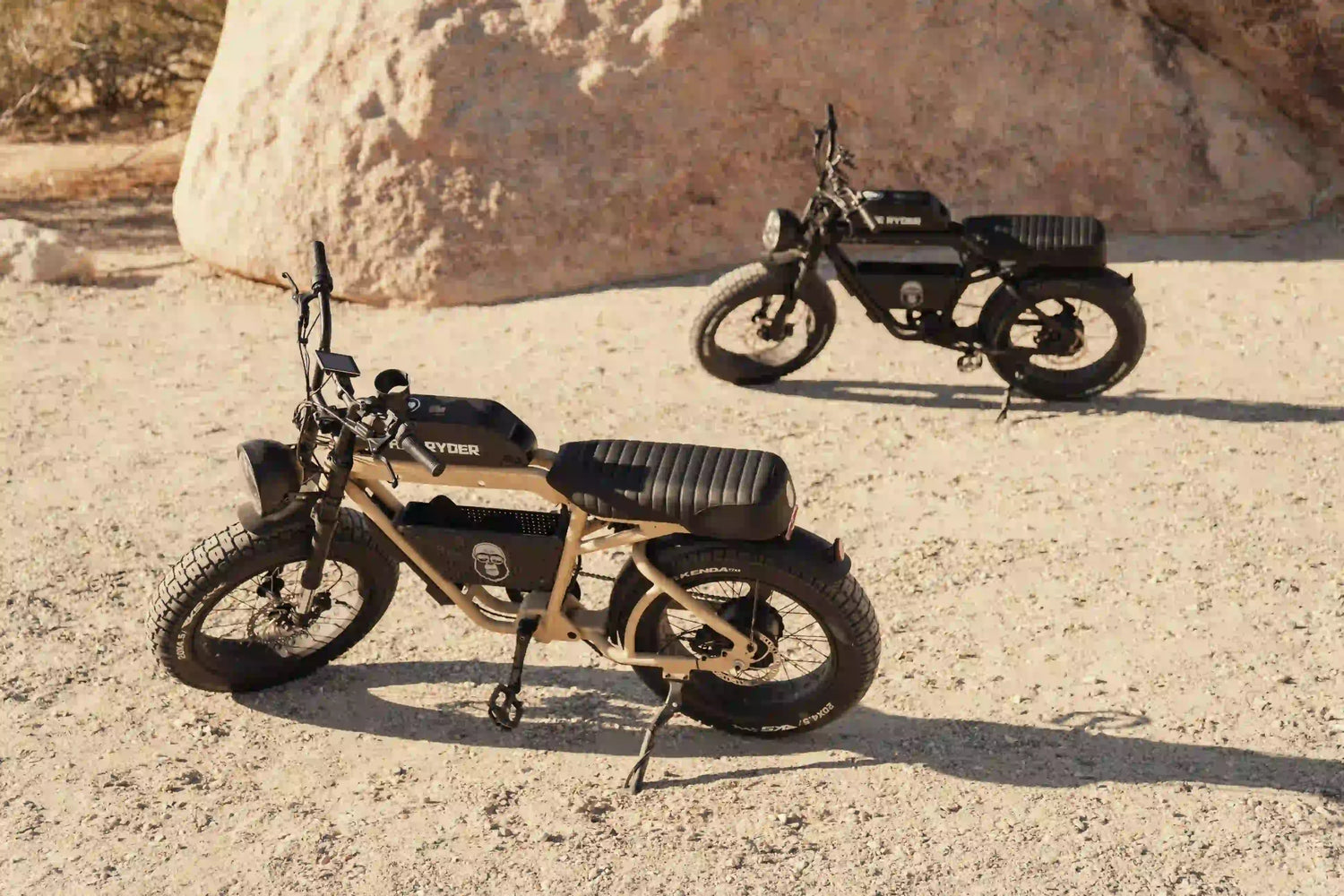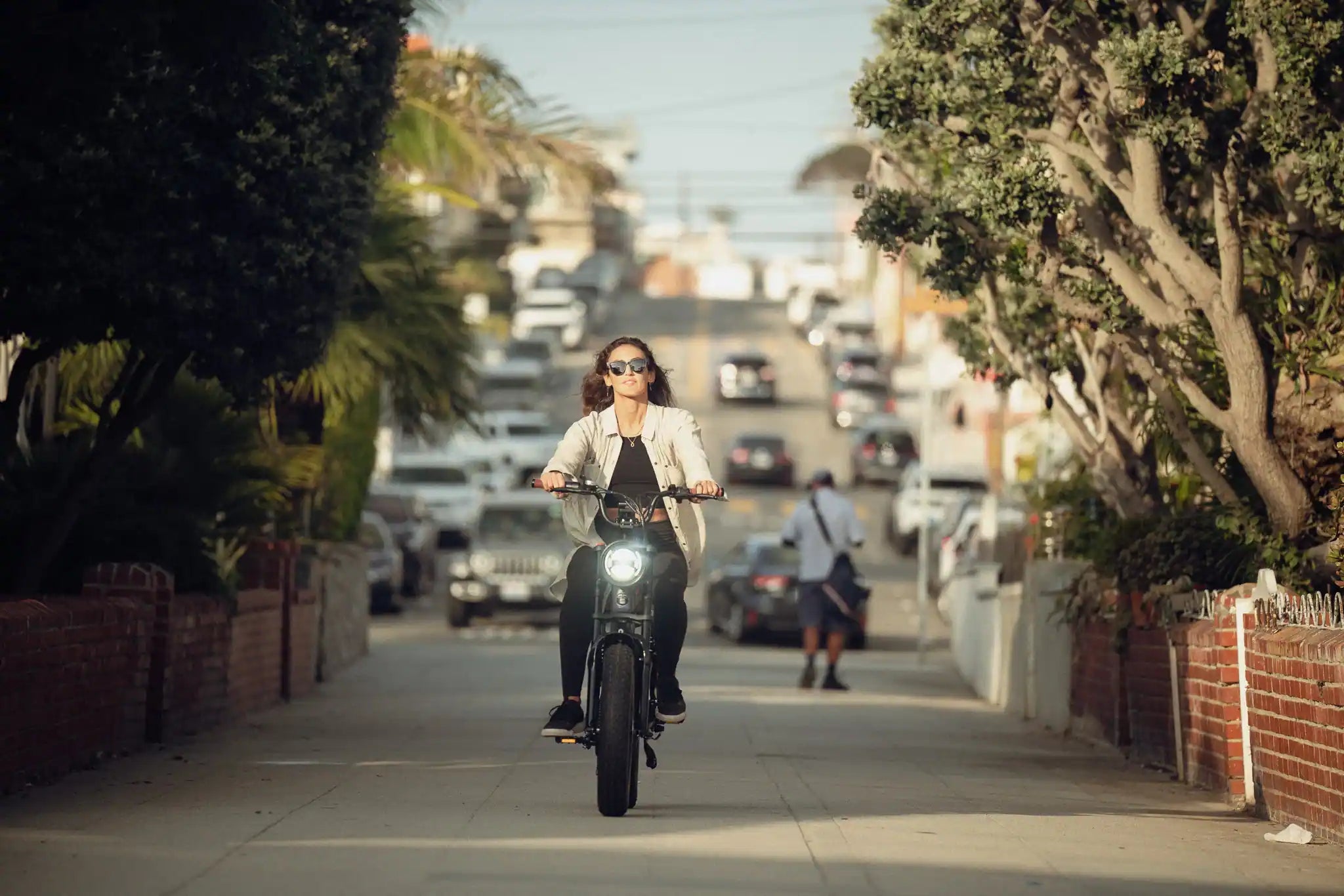E-bikes are much more than a trend in transportation; they are a game changer when it comes to ideas on commutation, fitness, and the environment. Be it the eco-conscious commuter, the outdoorsy, or the tech-savvy cycling enthusiast, you can make some very informed decisions based on the e-bike. In this blog post, we will review some of the different classes and special features that make e-bikes perfect for anyone. How will e-bikes reshape your daily life? Let us dive in.
Don't forget to check out Ape Ryder Class 1, Class 2 and Class 3 e-bikes here.
Understanding E-Bike Classes
E-bikes aren't all created equal. They have classes that consider speed, motor assistance, and legal restrictions, among other things. Understanding these differences will help you pick the right model for your needs.
Class 1 E-Bikes
Class 1 e-bikes will definitely appeal to riders looking for a biking experience in as seamless a way as possible without losing control. This kind of pedal-assist design gives one a boost as one pedals and best suits the person who needs to get some exercise while looking for an easier ride. Here in this post, we will discuss what it means to be a class 1 e-bike and why this should form the staple of your upcoming ride.
Pedal-Assist Only
Class 1 e-bikes motorize your pedaling, thereby improving the cycling experience. The motor kicks in as you pedal, providing a very natural riding experience and giving only the right amount of power when you need it. These e-bikes have no throttles, so it's your power blending faultlessly with the motor to help you conquer trickier terrain or push your speed on longer rides with far more ease.
Speed Limitations
These e-bikes are perfect for casual riders who want to enjoy a safe ride, with assisted speeds of up to 20 miles per hour. Once you hit that speed, the motor disengages, and you're on your own power. That makes Class 1 e-bikes perfect for someone who enjoys leisurely rides through the park or along some beautiful route but might appreciate a little boost when facing a hill or longer distances.
Regulation and Accessibility
Class 1 e-bikes offer just undeniable versatility since they are allowed on most paths and trails open to regular bicycles. This flexibility will give you an option to commute through the city on weekdays or ride trails over the weekend. Since they meet the normal cycling laws, you can be assured of riding within the law.
Class 2 E-Bikes
Class 2 e-bikes offer flexibility in both pedal assist and throttle-powered riding. No other style is likely to serve a wide range of riding needs as well as Class 2. They cruise along without pedaling, allowing for added convenience when taking a bike uphill or over really long distances with less effort. We'll closely examine Class 2 e-bikes, their features, and their benefits in this part to see whether these types of e-bikes are best for your riding style.
Throttle and Pedal-Assist
Class 2 e-bikes feature a throttle in combination with their pedal-assist mechanism. The rider can thus decide how he wants to move. Pedal if you want some exercise; throttle if you want an easy ride. In dual mode, it caters to different riding conditions and personal preference. This flexibility is particularly very helpful when one would like to alternate between the exertion and ease based on their energy levels.
Speed Considerations
While Class 2 e-bikes are also categorized as those offering electronic assistance of up to 20 miles per hour, what differs is the throttle feature—this bike category can be ridden without pedaling at all if need be. It would have been great for riders who wanted to take breaks from time to time in a ride or conserve their energy for longer distances. Many riders find class 2 e-bikes perfect for leisurely cruise-by riding or simply getting to work without sweating.
Legal Restrictions
In general, Class 2 e-bikes are allowed most of the places that Class 1 e-bikes are legally permitted to be ridden, though riders should be aware of their prohibition or specific local rulebases. Local regulations should always be checked on, as they may differ to a great degree from area to area. Be aware of where you are legally allowed to ride to avoid a headache.
Class 3 E-Bikes
Class 3 e-bikes are concerned with speed and efficiency—them being the fastest among all of the classifications of e-bikes. Capable of pedal assist topping out at 28 mph, they quickly commute or cover distance. We will explore some features and benefits in this article to help you decide whether a Class 3 e-bike best fits your needs.
Speed-Pedelecs
Class 3 e-bikes turn cycling up a notch with added pedal-assist capable of reaching 28 mph. This superior speed is tailor-made for advanced cyclists seeking faster and more dynamic rides daily, be it for commuting or just having fun. Faster travel time increases by a long shot, helping in long-distance riding.
No Throttle
But unlike the Class 2 e-bike, the Class 3 isn't going to have a throttle—the motor strictly assists while the pedal is in motion. This design promotes a more active ride and provides the opportunity for exercise while continuing to benefit from electric assistance. Great for people who want a little more challenge in pedaling, the motor is still there if they let it get a little harder to manage.
Usage and Regulations
Because they travel faster than both Class 1 and Class 2 e-bikes, the regulations around Class 3 e-bikes are generally much tighter. Quite a few bike paths and trails have banned Class 3 e-bikes, and some even have mandatory helmet requirements for riders. Much to the delight of speed-loving bicycle riders, Class 3 e-bikes are capable of covering long distances both quickly and safely, thus proving very useful to experienced riders.
Differences between Class 1, Class 2, and Class 3 E-Bikes
E-bikes fall into three different classes, depending on components and how each bicycle works. Class 1 e-bikes are pedal-assist electric bikes. That means the motor only turns on when you're pedaling and tops out at 20 miles an hour. This category of e-bikes provides support but still allows one to get a workout, so they appeal to casual riders and leisurely riders.
Class 2 e-bikes are throttle-powered, so there is no pedaling required to move. Their top speed is also cut off at 20 miles per hour. This can be perfect if you're looking to get less of a workout or just that extra push you need while getting started from a dead stop.
Class 3 e-bikes are speed-pedelecs, a pedal-assist topping out at 28 mph. There is no throttle like there is in Class 2, so to get the assist from the motor, one must actively pedal. Because of these higher speeds, Class 3 e-bikes have more regulations on bike paths, normally associated helmet mandates with their use, and attract serious cyclists.
Types of E-Bikes
City E-Bikes
For commuting among the city for daily use, city e-bikes offer the best solution for traffic and being an alternative for public transport. They are powered with lightweight frames, agile maneuverability and have comfortable seats to increase your comfort and joy. They are designed to tour the city, that’s why parts for extra safety are integrated. They have all your required gear for urban cycling experience.
Mountain E-Bike
Mountain e-bikes are known es MTB’s designed to ride on difficult off road and challenging terrains. These e-bikes have big solid frame, high powered power to handle technical terrains and wide and strong tires that provide excellent grip and stability on rough trails. Their suspension system is better when we compare with other types and models of e-bikes. Their suspension systems are built for shock and vibration absorption to enhance the experience of riding on rough paths.
Folding E-Bikes
Folding e-bikes are really nice options to riders looking for the utmost convenience by just being able to fold down their bikes in store them in any small space, be it a car trunk or a closet. These really cool electric bikes have strong, resistant frames that can be folded up easily into a small size for easy storage and transportability. Apart from its practicality, a folding e-bike has a strong motor fitted to still give you the feel of power, performance, and adrenaline rush when riding.
Cruiser E-Bikes
Cruiser e-bikes are designed for riding around the city like city e-bikes. They have comfortable seats to enhance the riding experience, upright handlebars also provide current posture for a relaxing ride which you need. Their suspension system is powered against road vibrations and challenging roads which is providing smooth and stable ride. They are built for enjoyable cycling experience through urban areas.
Fat Tire E-Bikes
Fat tire e-bikes are built to tackle any difficult terrain. Fat tire e-bikes have stronger and wider tires for maximum grip, suspension systems for absorbing the challenging routes and powerful motors for speed.. Our Gibbon and Bonobo electric bikes are examples of fat tire e-bikes. Other added features are hydraulic disc brakes, LCD display panels, and USB charging ports to enhance convenience.
E-Bikes for Different Ages
E-Bikes for Seniors
These senior e-bikes are designed with the needs and preferences of older adults in mind. The comfort level of the e-bike categories puts comfort at the top of the list, having a well-padded saddle for comfortable riding. Besides the comfortable design, senior e-bikes are complemented by powerful motors that boost pedaling effort with an extra push. With this comes ease of pedaling up inclines and longer distances with much effortlessness, making older adults more confident about riding without feelings of tiredness.
E-Bikes For Kids
According to them, specialty electric bikes designed for kids and youths are specially made to meet their needs. Coming in small in size, these kinds of e-bikes hold big and powerful motors that can help the rider to move as fast as 15 mph in speed. Besides having such breathtaking high speed, the kid version of e-bikes has very important utilities: the lights make it safe to be on the road at night, the fenders protect from splashes, and the rear rack easily carries schoolbooks or sports equipment. With all these funky details and functionalities, the kid e-bikes are a fun source of exploration and practical use for all those young riders who would like to get the best from their adventures.









Leave a comment
All comments are moderated before being published.
This site is protected by hCaptcha and the hCaptcha Privacy Policy and Terms of Service apply.